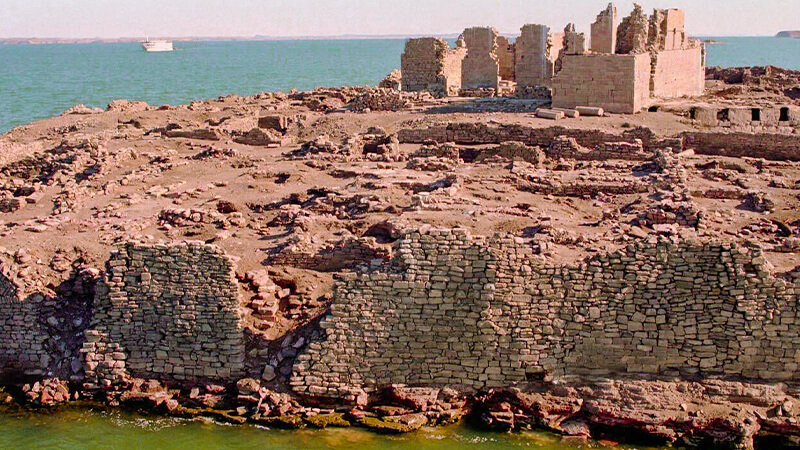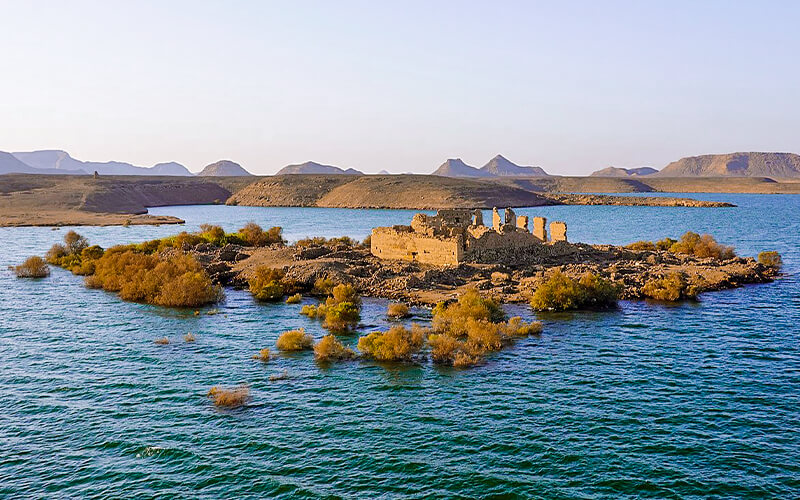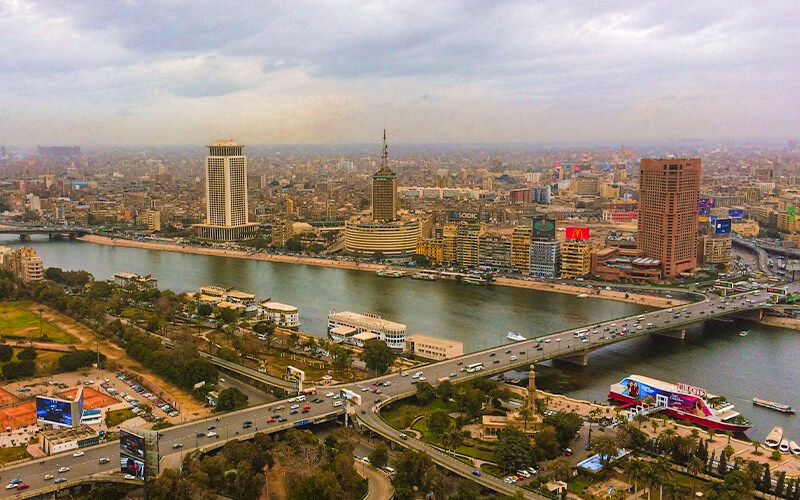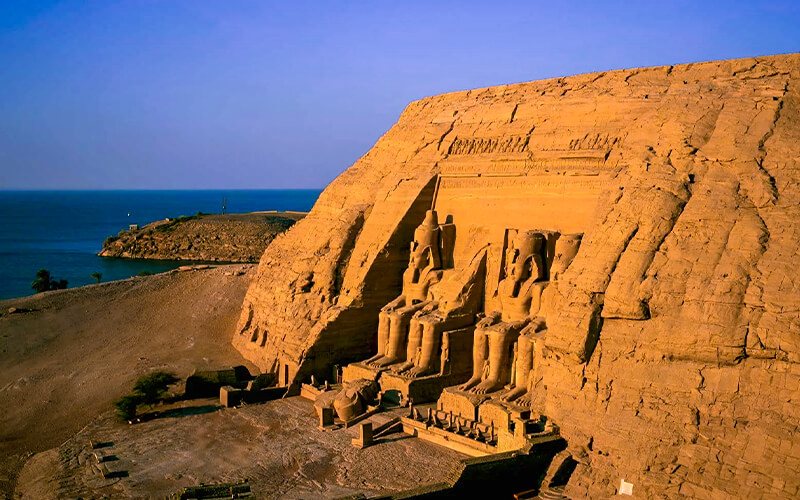Qasr Ibrim
Qasr Ibrim is the most notable of the three massifs found to the south of the village of Ibrim. It is situated 235 kilometers south of Aswan and 60 kilometers north of Abu Simbel. All of the reused monuments from the time of the New Kingdom provide the impression that the fort or castle of Qasr Ibrim was built on pharaonic foundations. Two of the earliest examples include a stele belonging to Amenhotep I and the temple located at Taharqa.
If you’re looking to spend a fantastic vacation in Egypt check out our Egypt Excursions with our qualified Egyptologist with the best Egypt travel guide in Egypt
The Qasr Ibrim History
Although the Romans also used this location, people continued to live there until the middle of the 19th century. The Pharaohs may have used it. It was once positioned on a high cliff above the Nile, but the lake’s rising waters have caused it to become a rocky island in the middle of Lake Nasser. This monument is the only one of its sort still standing close to the lake that we are aware of.
An affluent city was once guarded by the fortress Qasr Ibrim, but the lake finally engulfed its ruins. This area was the site of a vast cathedral constructed in the Middle Ages, and today its ruins stand as the island’s most recognizable landmark. This area had a high population up to the middle of the nineteenth century, but it gradually declined.
Currently, tourists are not permitted on the island because it is still a notable archaeological site. The city’s ruins were the largest repository of Old Nubian texts ever discovered before the lake rose, and excavations at the cathedral and other buildings on the island are ongoing. Cruise ships dock just adjacent to the island, so tourists may get a nice view of the remains without having to step ashore.

Qasr Ibrim is located in the south of Aswan
Facts about Qasr Ibrim
- After the Aswan Dam was built, which caused the Nile to rise and turn the city into an island, the only part of the temple that could be saved was the top. It is essential to remember that Qasr Ibrim is the only archaeological site in Lower Nubia to have survived the floods caused by the Nile.
- After the time of Augustus, when the fortification was only partly finished, the people who lived there never left.
- During the 18th and 19th dynasties, the rulers of Kush carved these temples and chapels into the rock to honor the pharaoh in charge and several gods.
- So that work on the Aswan Dam could keep going without being stopped, the relief had to be taken apart and moved to the El-Sebuah area. The vast stone stele of Sethy I and Amenemope, the viceroy of Kush at the time, was moved to the area around the temple of Kalabsha in Aswan. This part of the land is south of the fortress.
- The Qasr Ibrim citadel was built between 920 BC and 800 BC after the Egyptians left and the Nubians decided they needed a fortress to protect themselves. Where you can see what is left of the Qasr Ibrim citadel is Lake Nasser. This period is considered one of the most important in Qasr Ibrim’s history.
- The Roman walls surround the citadel, and at the northern end of the fort are the ruins of a fortification from the same period. The temple of Taharqa, built during the 25th dynasty, was also found during the digging.
Many Egypt Vacation Packages include trips to the country’s most famous landmarks. If you book one of these packages, you might be able to go back in time to Egypt and have a once-in-a-lifetime experience.



